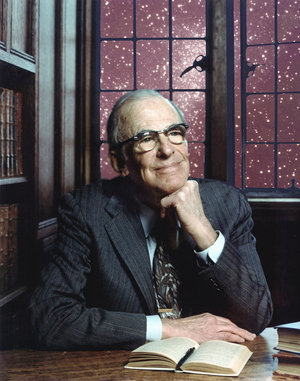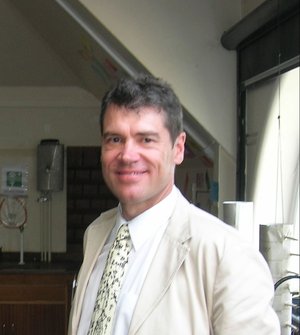50 years of space astronomy
| Russia | U.S. | Europe | Rest of the world |
|---|---|---|---|
| 1957-1961 | |||
| Oct. 1959 - Explorer 7, NASA's 1st solar astronomy satellite
Apr. 1961 - Explorer 11, 1st gamma astronomy satellite |
|||
| 1962-1966 | |||
| Dec. 1964 - Kosmos 51, 1st Soviet gamma/UV astronomy satellite | March 1962 - OSO-1, 1st orbiting solar observatory | April 1962 - Ariel 1 , Great Britain's 1st solar astronomy satellite
March 1964 - Ariel 2 , Great Britain's 1st radio astronomy satellite |
|
| 1967-1971 | |||
| June 1967 - Kosmos 166, 1st Soviet solar X-ray astronomy satellite | July 1968 - Explorer 38, NASA's 1st radio-astronomy satellite.
Dec. 1968 - OAO-1, 1st successful orbiting astronomy observatory, UV astronomy Dec. 1970 - Explorer 42 Uhuru, NASA's 1st X-ray astronomy satellite |
May 1968 - ESRO's 1st satellite, ESRO-2B, studies solar and cosmic radiation
Dec. 1968 - HEOS 1, Europe's 1st satellite in cislunar orbit, studies solar and cosmic radiation |
|
| 1972-1976 | |||
| Aug. 1972 - OAO-3 Copernicus, NASA's 1st UV/X-ray orbiting astronomy observatory
May 1973 - Apollo Telescope Mount, 1st orbiting manned astronomy observatory on Skylab space station |
April 1971 - Tournesol, France's 1st UV and solar astronomy satellite
March 1972 - TD-1, ESRO's 1st astronomy satellite conducts 1st all-sky UV survey Aug. 1974 - ANS, the 1st Dutch satellite, is dedicated to UV/X-ray astronomy Oct. 1974 -Ariel 5, Great-Britain's 1st X-ray astronomy satellite Aug. 1975 - ESA's COS-B gamma ray observatory, first complete survey of galactic sources |
Apr. 1975 - Aryabhata, India's 1st science satellite X-ray and solar astronomy | |
| 1977-1981 | |||
| Aug. 1977 - HEAO-1, NASA's 1st high-energy X-ray observatory | |||
| Jan. 1978 - IUE, joint ESA/NASA/UK UV astronomy observatory | |||
| June 1979 - KRT-10 radio-telescope deployed on Salyut 6 space station | Aug. 1978 - HEAO-2 Einstein, high-energy X-ray observatory
Sept. 1979 - HEAO-3, NASA's 1st gamma ray observatory Feb. 1980 - SMM Solar Max, solar observatory. |
Feb. 1979 - Corsa-B, Japan's 1st X-ray astronomy satellite Feb. 1981 - Astro A, Japan's 1st solar astronomy satellite | |
| 1982-1986 | |||
| Jan. 1983 - IRAS, joint NASA/Netherlands/UK infrared astronomy satellite | |||
| March 1983 - Astron 1, 1st large Soviet UV observatory | May 1983 - Exosat, ESA's 1st X-ray astronomy satellite | ||
| 1987-1991 | |||
| Dec. 1989 - Granat, 1st large Soviet gamma ray observatory | Nov. 1989 - COBE, 1st satellite dedicated to the cosmic background radiation
April 1990 - NASA launches the Hubble Space Telescope, its first 'great observatory' |
Aug. 1989 - ESA's Hipparcos, 1st astrometry satellite conducts the most accurate mapping of the skies through 1993
Dec. 1989 - French Sigma telescope flown on Granat, Soviet gamma ray observatory April 1990 - ESA's Faint Object Camera flies on Hubble Space Telescope |
Feb. 1987 - Astro C, Japan's 1st gamma astronomy satellite |
| June 1990 - RoSat, joint German/NASA/UK X-ray/UV observatory | |||
| July 1990 - Gamma 1, Soviet gamma/X-rays observatory | Dec. 1990 - STS-35, 1st space shuttle mission dedicated to astronomy
pril 1991 - Compton gamma ray observatory, NASA's 2nd 'great observatory' |
July 1990 - Major French and Polish contribution to Gamma 1, Soviet gamma/X-rays observatory | |
| 1992-1996 | |||
| March 1994 - Koronas I, joint Russia/Ukraine solar X-ray astronomy mission | June 1992 - EUVE, NASA extreme UV astronomy satellite
Dec. 1995 - RXTE, NASA X-ray astronomy satellite |
Nov. 1995 - ISO, ESA's first infrared astronomy satellite
Dec. 1995 - SOHO, joint ESA/NASA solar observatory at the L1 libration point April 1996 - BeppoSAX, joint Italy/Netherlands X-ray astronomy satellite |
|
| 1997-2001 | |||
| Dec. 1998 - SWAS, 1st submillimetric astronomy satellite
March 1999 - WIRE, wide-field infrared astronomy satellite July 1999 - Chandra X-ray observatory, NASA's 3rd "great observatory" |
Dec. 1999 - ESA's XMM-Newton is the world's most sensitive X-ray astronomy observatory | Feb. 1997 - Muses B, Japan's 1st radio-astronomy satellite | |
| 2001-2006 | |||
| June 2001 - WMAP, NASA's 2nd satellite to refine the map of cosmic background radiation
Feb. 2002 - RHESSI, high-energy solar astronomy satellite Apr. 2003 - Galex, 1st all-sky UV survey since Europe's TD-1 Aug. 2003 - Spitzer infrared space telescope, NASA's 4th and last "great observatory" Nov. 2004 - Swift, NASA UV and gamma/X-ray satellite to identify gamma bursts origin |
Oct. 2002 - ESA's Integral gamma ray observatory combines celestial imaging and spectroscopy of X-ray and gamma energies
Dec. 2006 - CoRoT, French astronomy satellite with ESA contribution, dedicated to astrosismology and exoplanet detection |
June 2003 - MOST, Canada's 1st astrosismology satellite
Feb. 2006 - Astro F, Japan's 1st infrared astronomy satellite |
|
| 2007 | |||
| Feb. 2007 - Rosetta's flyby of Mars | |||






